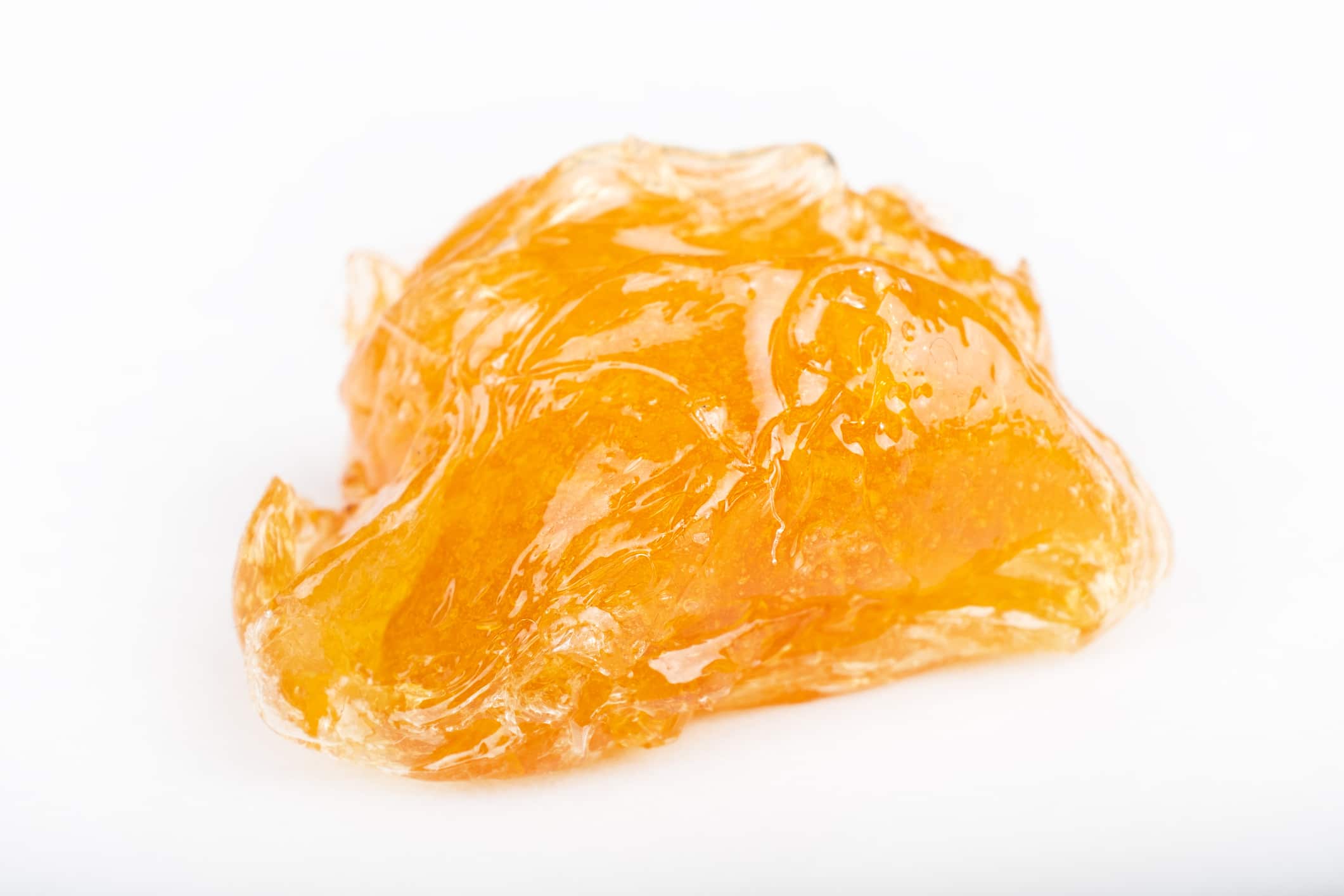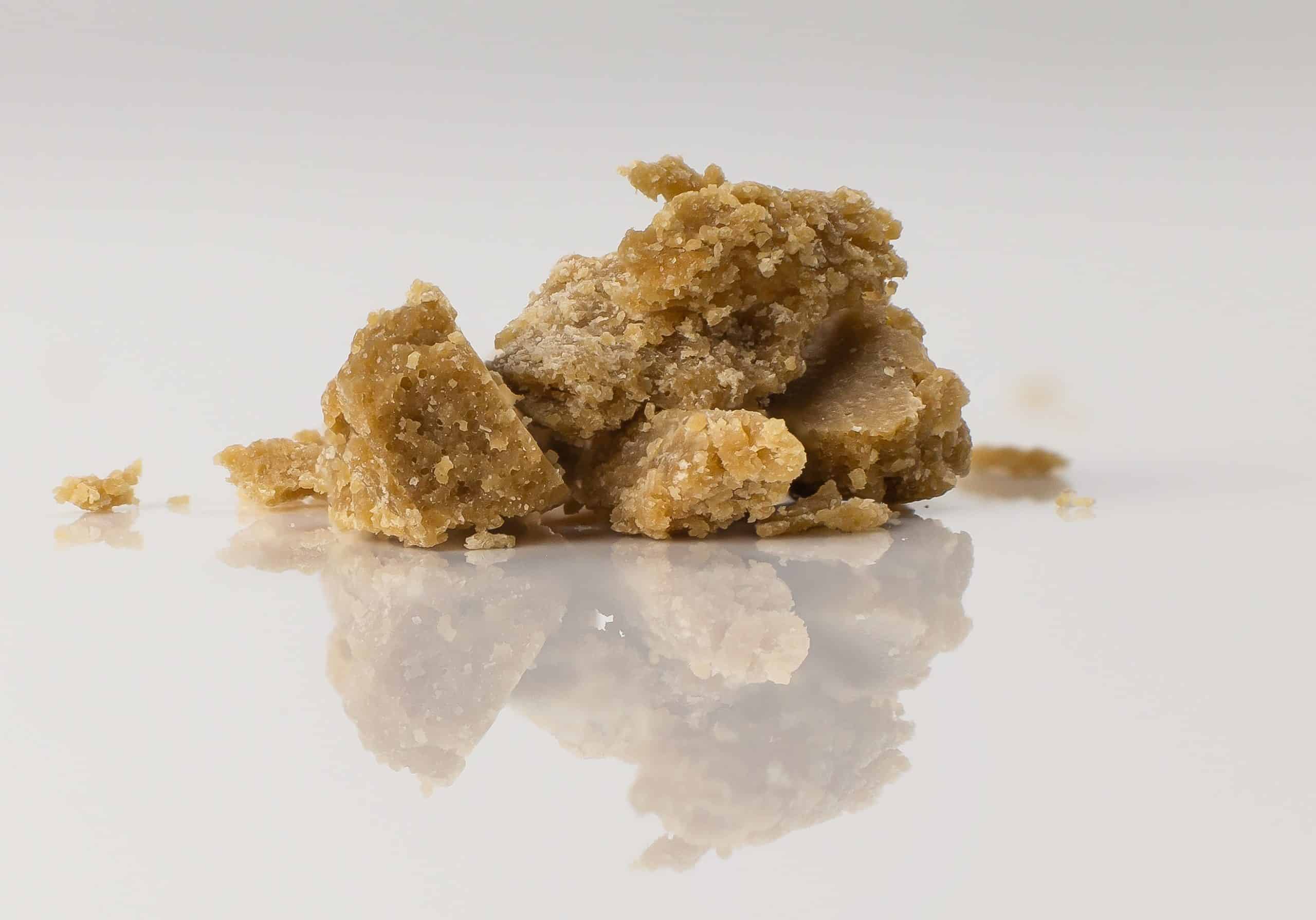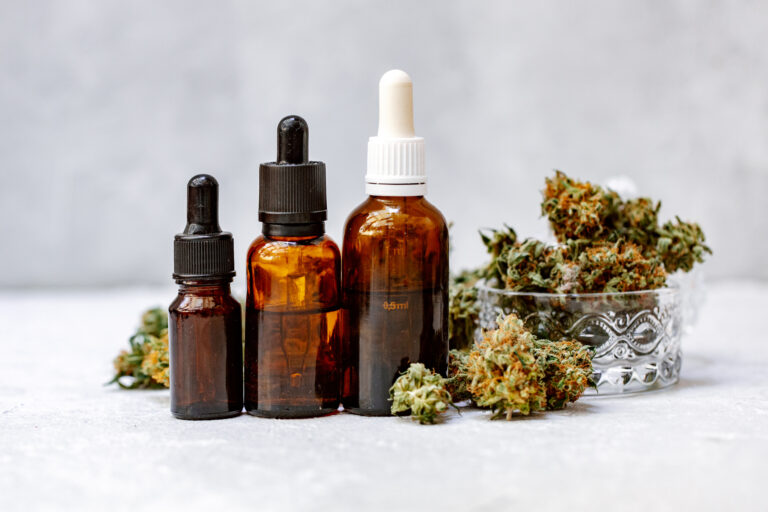Keep Reading
If you’re going for potency over terpenes, cannabis concentrates are definitely the way to go. Flower buds will always have their place, but concentrates have quickly grown to be some of the most highly sought-after cannabis products, and it is for good reason: you get more for your money, so to speak. Two of the most popular concentrates at most dispensaries are shatter and wax. What are the differences? Here is an explanation.
Jump to: Differences Between Shatter & Wax
What Is Shatter?
Of all the concentrates you’ll find hanging out on a dispensary shelf, shatter is one of the easiest to point out because of its appearance. The concentrate looks a lot like hard candy, so it is typically this flashy golden-to-amber color that is either totally translucent or pretty close. Shatter contains a high THC content; as much as 80 percent or higher, so the concentrate is one of the most potent you can find.
How Shatter Is Made
Shatter is made using either butane or hydrocarbon solvents to strip away the bulk of the plant material and isolate the valuable cannabinoids. The oily extract that remains is then heated to an excessive temperature until all that remains is a highly concentrated—and potent—extract. When the extract cools after the high-temperature process, you end up with a sheet of amber glass. Making shatter is definitely not a DIY process because it involves the use of flammable solvents.
What Is Wax?
Wax is not hard to spot either when it comes to cannabis concentrates, but there are a few other concentrates that have a similar appearance. For the most part, wax has a light amber/brown sort of color about the shade of peanut or almond butter. The consistency is waxy, just as the name implies, but less like the consistency of peanut butter and more like the consistency of solid-state coconut oil. Much like shatter, wax can be highly potent with a THC content of as much as 80 percent or more.
How Wax Is Made
Wax is oftentimes referred to as BHO (butane hash oil) wax because it, too, is made using solvents like butane. Essentially, the extracted THC oil from cannabis is heated to a specific temperature and agitated in the process, which leads to that telltale opaque appearance and waxy texture.
Differences Between Shatter and Wax
Stability
One big way that shatter differs from wax is its stability. The molecules in shatter are tightly stacked and bonded, so what you end up with is a more durable concentrate that doesn’t break down so easily. For this reason, shatter is going to have a longer shelf life than wax. Similar to something like live resin, wax may start to lose its potency much sooner, is likely to deteriorate with exposure to heat, and is not all that resilient when it comes to long-term storage.
Consistency
The obvious difference when it comes to shatter vs wax that even a newbie would notice is the consistency. Shatter is hard like hard candy; wax is, well, waxy. This also means that shatter can be a little harder to measure and handle, while wax is relatively easy to break apart into small portions. As a side note, however, shatter can be heated so it is easier to pull off a small serving.
Usage Methods
Both shatter and wax can be dabbed with a dab rig, which is basically a bong with a dab nail so that it can accommodate the concentrate instead of flower. The process of using the concentrates involves heating them up to a high temp and then inhaling the vapors. Shatter and wax do differ in the fact that wax can be easily used for twaxing (mixing dry herb with a concentrate), but it would be much harder to do this with shatter.

Shop The Best Concentrates in New England
Shop NowDiscover Shatter vs Wax for Yourself
In the end, shatter and wax are two very similar cannabis concentrates that have a few unique differences, but both are well worth getting to know for a high-THC experience. Be sure to check out our full guide on cannabis concentrates to get a closer look at other popular concentrates, such as THC distillate and more.



